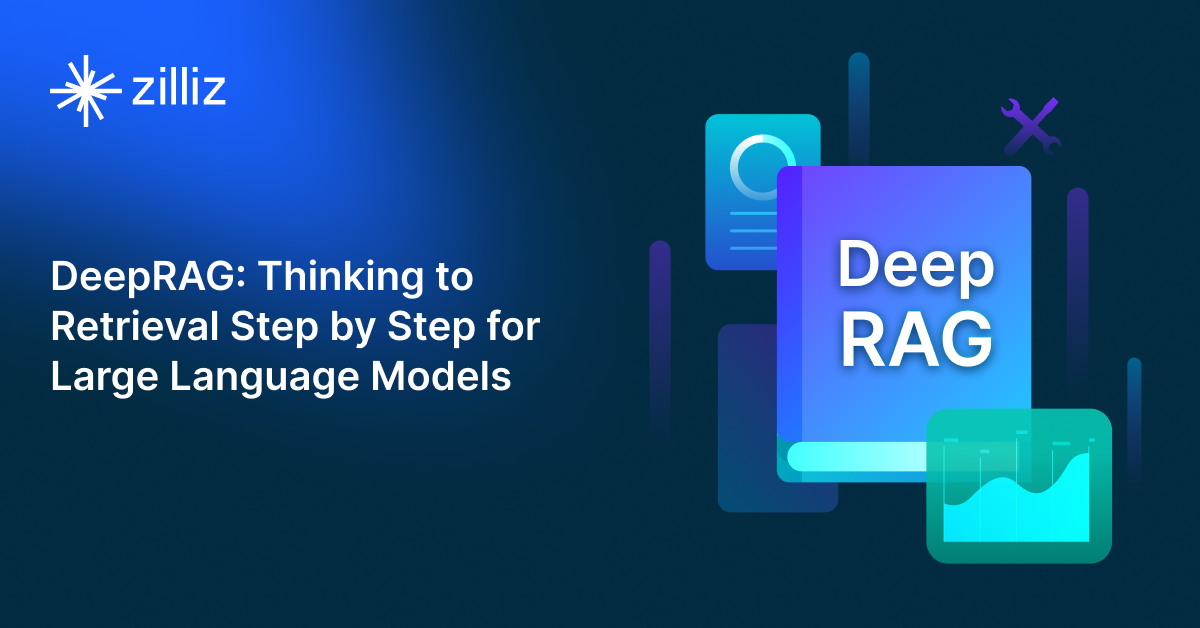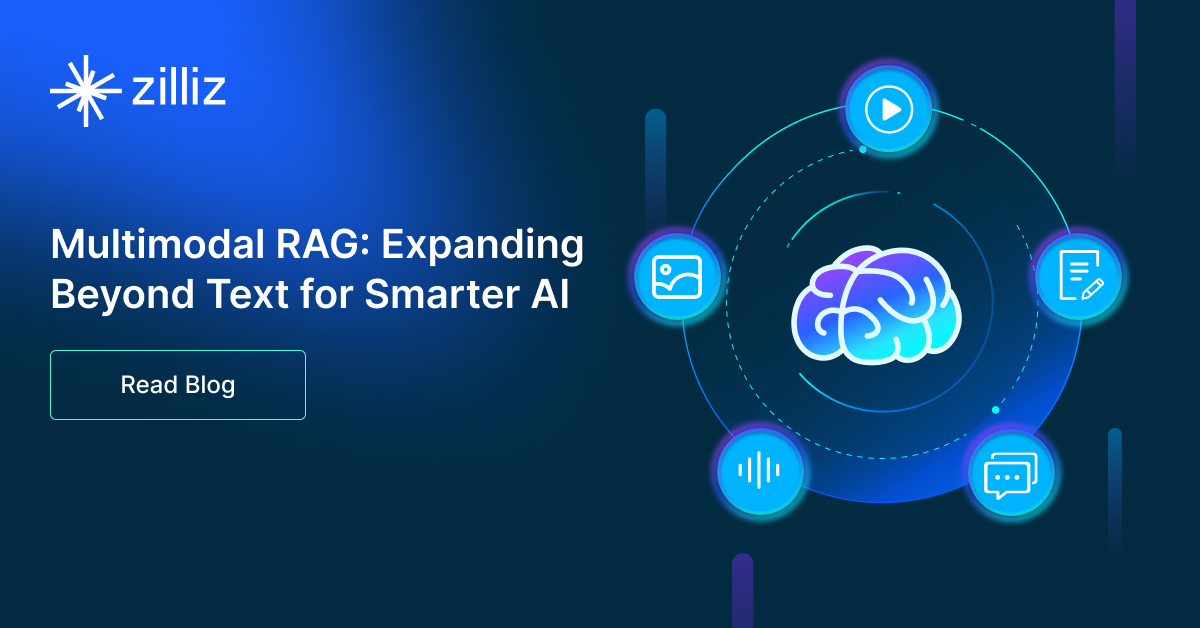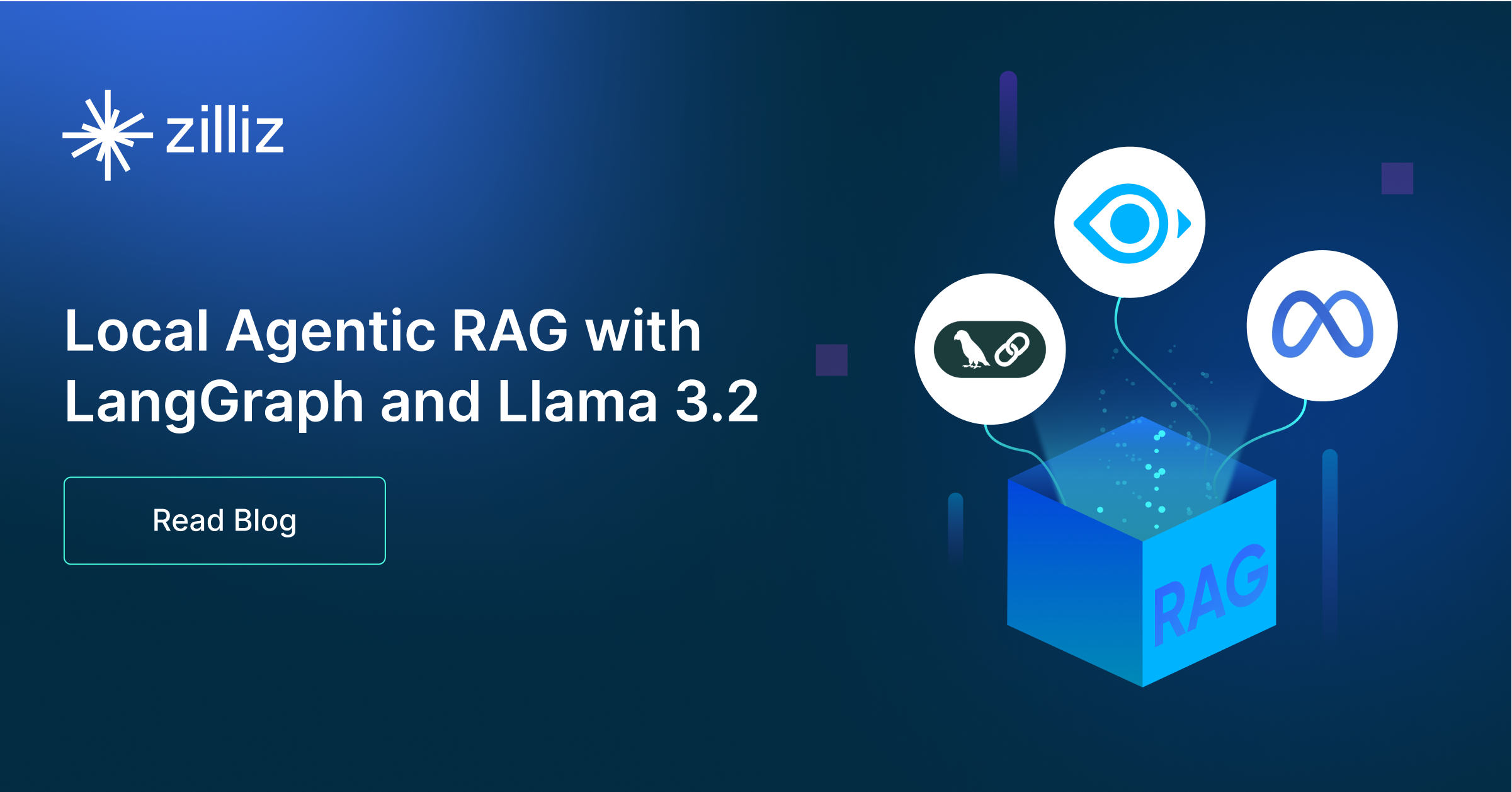Build RAG Chatbot with Llamaindex, Zilliz Cloud, Anthropic Claude 3 Haiku, and jina-embeddings-v3
Introduction to RAG
Retrieval-Augmented Generation (RAG) is a game-changer for GenAI applications, especially in conversational AI. It combines the power of pre-trained large language models (LLMs) like OpenAI’s GPT with external knowledge sources stored in vector databases such as Milvus and Zilliz Cloud, allowing for more accurate, contextually relevant, and up-to-date response generation. A RAG pipeline usually consists of four basic components: a vector database, an embedding model, an LLM, and a framework.
Key Components We'll Use for This RAG Chatbot
This tutorial shows you how to build a simple RAG chatbot in Python using the following components:
- Llamaindex: a data framework that connects large language models (LLMs) with various data sources, enabling efficient retrieval-augmented generation (RAG). It helps structure, index, and query private or external data, optimizing LLM applications for search, chatbots, and analytics.
- Zilliz Cloud: a fully managed vector database-as-a-service platform built on top of the open-source Milvus, designed to handle high-performance vector data processing at scale. It enables organizations to efficiently store, search, and analyze large volumes of unstructured data, such as text, images, or audio, by leveraging advanced vector search technology. It offers a free tier supporting up to 1 million vectors.
- Anthropic Claude 3 Haiku: A lightweight, high-speed AI model optimized for rapid processing of simple queries and high-volume tasks. Strengths include low latency, cost-efficiency, and multilingual support, ideal for real-time interactions, data extraction, content moderation, and scalable enterprise workflows requiring fast, accurate responses with minimal resource usage.
- Jina-Embeddings-v3: A state-of-the-art embedding model designed for high-dimensional vector representations of text, excelling in multilingual understanding and long-context retention. Its scalable architecture ensures robust performance in semantic search, clustering, and retrieval-augmented generation (RAG) systems. Ideal for applications requiring precise semantic analysis across diverse languages and lengthy documents, combining accuracy with efficiency.
By the end of this tutorial, you’ll have a functional chatbot capable of answering questions based on a custom knowledge base.
Note: Since we may use proprietary models in our tutorials, make sure you have the required API key beforehand.
Step 1: Install and Set Up Llamaindex
pip install llama-index
Step 2: Install and Set Up Anthropic Claude 3 Haiku
%pip install llama-index-llms-anthropic
from llama_index.llms.anthropic import Anthropic
# To customize your API key, do this
# otherwise it will lookup ANTHROPIC_API_KEY from your env variable
# llm = Anthropic(api_key="")
llm = Anthropic(model="claude-3-haiku-20240307")
Step 3: Install and Set Up jina-embeddings-v3
%pip install llama-index-embeddings-jinaai
You may also need other packages that do not come direcly with llama-index.
!pip install Pillow
from llama_index.embeddings.jinaai import JinaEmbedding
embed_model = JinaEmbedding(
api_key=jinaai_api_key,
model="jina-embeddings-v3",
# choose `retrieval.passage` to get passage embeddings
task="retrieval.passage",
)
Step 4: Install and Set Up Zilliz Cloud
pip install llama-index-vector-stores-milvus
from llama_index.core import VectorStoreIndex, StorageContext
from llama_index.vector_stores.milvus import MilvusVectorStore
vector_store = MilvusVectorStore(
uri=ZILLIZ_CLOUD_URI,
token=ZILLIZ_CLOUD_TOKEN,
dim=1536, # You can replace it with your embedding model's dimension.
overwrite=True,
)
Step 5: Build a RAG Chatbot
Now that you’ve set up all components, let’s start to build a simple chatbot. We’ll use the Milvus introduction doc as a private knowledge base. You can replace it with your own dataset to customize your RAG chatbot.
import requests
from llama_index.core import SimpleDirectoryReader
# load documents
url = 'https://raw.githubusercontent.com/milvus-io/milvus-docs/refs/heads/v2.5.x/site/en/about/overview.md'
example_file = 'example_file.md' # You can replace it with your own file paths.
response = requests.get(url)
with open(example_file, 'wb') as f:
f.write(response.content)
documents = SimpleDirectoryReader(
input_files=[example_file]
).load_data()
print("Document ID:", documents[0].doc_id)
storage_context = StorageContext.from_defaults(vector_store=vector_store)
index = VectorStoreIndex.from_documents(
documents, storage_context=storage_context, embed_model=embed_model
)
query_engine = index.as_query_engine(llm=llm)
res = query_engine.query("What is Milvus?") # You can replace it with your own question.
print(res)
Example output
Milvus is a high-performance, highly scalable vector database designed to operate efficiently across various environments, from personal laptops to large-scale distributed systems. It is available as both open-source software and a cloud service. Milvus excels in managing unstructured data by converting it into numerical vectors through embeddings, which facilitates fast and scalable searches and analytics. The database supports a wide range of data types and offers robust data modeling capabilities, allowing users to organize their data effectively. Additionally, Milvus provides multiple deployment options, including a lightweight version for quick prototyping and a distributed version for handling massive data scales.
Optimization Tips
As you build your RAG system, optimization is key to ensuring peak performance and efficiency. While setting up the components is an essential first step, fine-tuning each one will help you create a solution that works even better and scales seamlessly. In this section, we’ll share some practical tips for optimizing all these components, giving you the edge to build smarter, faster, and more responsive RAG applications.
LlamaIndex optimization tips
To optimize LlamaIndex for a Retrieval-Augmented Generation (RAG) setup, structure your data efficiently using hierarchical indices like tree-based or keyword-table indices for faster retrieval. Use embeddings that align with your use case to improve search relevance. Fine-tune chunk sizes to balance context length and retrieval precision. Enable caching for frequently accessed queries to enhance performance. Optimize metadata filtering to reduce unnecessary search space and improve speed. If using vector databases, ensure indexing strategies align with your query patterns. Implement async processing to handle large-scale document ingestion efficiently. Regularly monitor query performance and adjust indexing parameters as needed for optimal results.
Zilliz Cloud optimization tips
Optimizing Zilliz Cloud for a RAG system involves efficient index selection, query tuning, and resource management. Use Hierarchical Navigable Small World (HNSW) indexing for high-speed, approximate nearest neighbor search while balancing recall and efficiency. Fine-tune ef_construction and M parameters based on your dataset size and query workload to optimize search accuracy and latency. Enable dynamic scaling to handle fluctuating workloads efficiently, ensuring smooth performance under varying query loads. Implement data partitioning to improve retrieval speed by grouping related data, reducing unnecessary comparisons. Regularly update and optimize embeddings to keep results relevant, particularly when dealing with evolving datasets. Use hybrid search techniques, such as combining vector and keyword search, to improve response quality. Monitor system metrics in Zilliz Cloud’s dashboard and adjust configurations accordingly to maintain low-latency, high-throughput performance.
Anthropic Claude 3 Haiku optimization tips
To optimize Claude 3 Haiku in RAG systems, prioritize semantic search quality by combining keyword and vector-based retrieval with tuned chunk sizes (256-512 tokens) and overlap for context preservation. Structure retrieved content using XML tags or section headers for clearer parsing, and enforce strict context grounding via system prompts like "Base responses solely on provided documents." Limit output length to 300-500 tokens for cost efficiency, implement response validation against source materials to reduce hallucinations, and cache frequent queries. Use rate limiting to manage throughput and parallelize processing for high-volume workflows while monitoring accuracy metrics.
Jina-embeddings-v3 optimization tips
To optimize Jina-embeddings-v3 in a RAG setup, preprocess input text by normalizing casing, removing redundant whitespace, and truncating to the model’s maximum sequence length (e.g., 8,192 tokens). Batch embedding generation for parallel processing, balancing GPU/CPU memory constraints. Use FP16 precision for faster inference if hardware supports it. Cache frequently accessed document embeddings to reduce recomputation. Experiment with dimensionality reduction (e.g., PCA) if downstream tasks tolerate lower-dimensional vectors. Regularly update to the latest model version for performance improvements. Monitor latency and adjust batch sizes dynamically for throughput-latency trade-offs.
By implementing these tips across your components, you'll be able to enhance the performance and functionality of your RAG system, ensuring it’s optimized for both speed and accuracy. Keep testing, iterating, and refining your setup to stay ahead in the ever-evolving world of AI development.
RAG Cost Calculator: A Free Tool to Calculate Your Cost in Seconds
Estimating the cost of a Retrieval-Augmented Generation (RAG) pipeline involves analyzing expenses across vector storage, compute resources, and API usage. Key cost drivers include vector database queries, embedding generation, and LLM inference.
RAG Cost Calculator is a free tool that quickly estimates the cost of building a RAG pipeline, including chunking, embedding, vector storage/search, and LLM generation. It also helps you identify cost-saving opportunities and achieve up to 10x cost reduction on vector databases with the serverless option.
 Calculate your RAG cost
Calculate your RAG cost
What Have You Learned?
Wow, what a journey we've been on together! By diving into this tutorial, you've not only explored the seamless integration of a robust framework like LlamaIndex, a powerful vector database such as Zilliz Cloud, an incredible language model with Anthropic Claude 3 Haiku, and an advanced embedding model like jina-embeddings-v3, but you've also unlocked the potential of building a Retrieval-Augmented Generation (RAG) system. Each component plays a crucial role: LlamaIndex organizes your data, Zilliz Cloud ensures fast and efficient storage with its user-friendly interface, Claude 3 brings your queries to life with its sophisticated language processing, and the embedding model enhances your data representation. Together, these elements allow you to create a system that not only retrieves relevant information but also augments it for more meaningful interactions.
But that’s not all! The tutorial offered essential optimization tips to refine your RAG pipeline further, ensuring that you can harness the full power of these technologies. Plus, with our free RAG cost calculator by your side, you can easily evaluate and manage your project expenses. So, are you ready to take the leap? Imagine the innovative applications you can build! Don’t hesitate to start experimenting, optimizing, and creating truly groundbreaking solutions in your own RAG systems. The possibilities are endless, and with your newfound knowledge, the sky's the limit! Let's get building!
Further Resources
🌟 In addition to this RAG tutorial, unleash your full potential with these incredible resources to level up your RAG skills.
- How to Build a Multimodal RAG | Documentation
- How to Enhance the Performance of Your RAG Pipeline
- Graph RAG with Milvus | Documentation
- How to Evaluate RAG Applications - Zilliz Learn
- Generative AI Resource Hub | Zilliz
We'd Love to Hear What You Think!
We’d love to hear your thoughts! 🌟 Leave your questions or comments below or join our vibrant Milvus Discord community to share your experiences, ask questions, or connect with thousands of AI enthusiasts. Your journey matters to us!
If you like this tutorial, show your support by giving our Milvus GitHub repo a star ⭐—it means the world to us and inspires us to keep creating! 💖
- Introduction to RAG
- Key Components We'll Use for This RAG Chatbot
- Step 1: Install and Set Up Llamaindex
- Step 2: Install and Set Up Anthropic Claude 3 Haiku
- Step 3: Install and Set Up jina-embeddings-v3
- Step 4: Install and Set Up Zilliz Cloud
- Step 5: Build a RAG Chatbot
- Optimization Tips
- RAG Cost Calculator: A Free Tool to Calculate Your Cost in Seconds
- What Have You Learned?
- Further Resources
- We'd Love to Hear What You Think!
Content
Vector Database at Scale
Zilliz Cloud is a fully-managed vector database built for scale, perfect for your RAG apps.
Try Zilliz Cloud for Free


